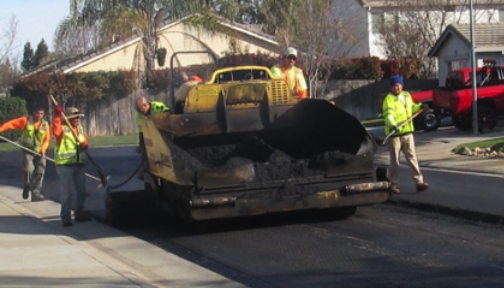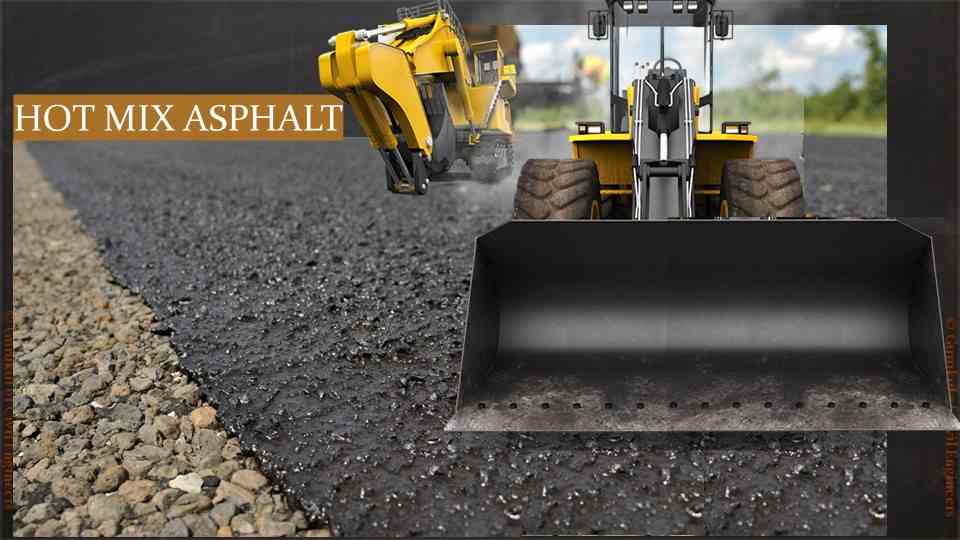Reimagine Your Area: Hot Mix Asphalt Paving for Angled Parking Lot Projects
Reimagine Your Area: Hot Mix Asphalt Paving for Angled Parking Lot Projects
Blog Article
Opening the Tricks of Warm Mix Asphalt Modern Technology
Discovering the midsts of warm mix asphalt technology uncovers a world where accurate formulas and careful processes converge to form our roadways and framework. The fusion of binders, fillers, and accumulations isn't merely a building and construction job however a strategic orchestration of toughness and performance. As we peer right into the elaborate dancing of parts, a tapestry of strength and sustainability unravels. What exists underneath this surface of asphaltic proficiency, and what secrets wait to be introduced in the world of paving innovations?
Importance of Warm Mix Asphalt
Warm Mix Asphalt plays an important role in modern-day facilities growth due to its durability and cost-effectiveness. As the most commonly made use of leading material for roadways, freeways, and auto parking whole lots, Hot Mix Asphalt uses a variety of advantages that add to its value in building and construction projects. One essential advantage is its capability to stand up to hefty website traffic loads and severe weather conditions, providing a long-lasting and trustworthy surface area for transportation networks. Furthermore, Hot Mix Asphalt is cost-effective in both first construction and long-term upkeep, making it a favored selection for several infrastructure tasks.
The durability of Hot Mix Asphalt stems from its structure, which consists of aggregates, binder, and filler materials that are very carefully picked and blended to satisfy particular efficiency needs. In general, the importance of Hot Mix Asphalt in facilities development can not be downplayed, as it continues to be a foundation of contemporary construction practices.
Components of Asphalt Mixes
The composition of asphalt blends is composed of meticulously selected aggregates, binder, and filler products that are vital for accomplishing specific efficiency requirements. Accumulations are the primary part of asphalt blends, supplying strength and stability. The binder, generally asphalt or asphalt cement, holds the aggregates with each other and provides versatility and sturdiness to the mix.
The combination and proportion of these elements play a significant duty in figuring out the top quality and efficiency of the asphalt mix. Designers carefully design the mix to satisfy certain needs, considering factors like traffic quantity, environment problems, and sidewalk life-span. Correct option and harmonizing of accumulations, binder, and fillers are important for creating resilient, durable asphalt sidewalks.
Mixing and Production Strategies

As soon as the accumulations are selected, the binder, often asphalt concrete, is contributed to bind the products with each other. The binder's quality Visit Your URL and quantity significantly impact the mix's strength, resistance, and flexibility to ecological elements. Additionally, fillers like moisturized lime or Rose city concrete may be integrated to enhance certain features of the asphalt mix, such as its workability or dampness resistance.
Throughout production, the aggregates and binder are warmed, generally in between 250-325 ° F(121-163 ° C ), to help with mixing and make sure appropriate finishing of the accumulations. The mixing procedure needs to be complete to attain an uniform combination that promotes the desired efficiency characteristics of the asphalt. Different strategies, such as batch mixing or drum blending, are utilized to achieve consistent and top notch asphalt mixes for building jobs.
Aspects Affecting Asphalt Performance
Factors affecting asphalt performance encompass a variety of variables that impact the longevity, durability, and overall high quality of asphalt sidewalks. One essential aspect is the top quality read this article of materials utilized in the asphalt mix.

Layout considerations, such as pavement thickness and drain, are necessary in making certain the long-term performance of the asphalt pavement. By thoroughly thinking about these aspects, designers and service providers can optimize asphalt performance and enhance the service life of sidewalks.
Sustainable Practices in Asphalt Modern Technology

Additionally, the growth of warm-mix asphalt (WMA) modern technologies has actually acquired grip in the last few years. WMA permits the manufacturing and placement of asphalt blends at reduced temperatures compared to typical hot-mix asphalt, causing minimized energy intake and greenhouse gas discharges. The use of permeable asphalt mixes can help minimize stormwater overflow concerns by enabling water to infiltrate via the pavement and right into the ground, promoting all-natural water filtration and reenergize processes. By applying these lasting practices, the asphalt market can add to developing a more resistant and ecologically pleasant facilities network.
Final Thought
To conclude, warm mix asphalt technology plays an important duty in modern-day infrastructure development due to its toughness and cost-effectiveness. By meticulously stabilizing elements, utilizing correct blending strategies, and taking into Learn More Here consideration numerous variables, designers can develop high-quality asphalt mixes that withstand rush hour loads and harsh climate condition. Welcoming lasting techniques, such as making use of warm-mix innovations and recycled materials, even more enhances the ecological kindness of asphalt innovation.
Mixing and production strategies in warm mix asphalt innovation include the precise mix and handling of aggregates, binder, and fillers to create a durable and high-performance asphalt mix.Aspects influencing asphalt performance incorporate a variety of variables that impact the durability, long life, and total top quality of asphalt sidewalks. Sustainable practices in asphalt modern technology include numerous efforts aimed at lowering the environmental impact of asphalt manufacturing and paving processes. By including recovered asphalt sidewalk (RAP) and recycled asphalt tiles (RAS) right into new asphalt blends, the industry can dramatically decrease the intake of raw materials and power, while likewise lowering garbage dump waste.
WMA permits for the production and positioning of asphalt mixes at reduced temperatures contrasted to typical hot-mix asphalt, resulting in decreased energy intake and greenhouse gas discharges.
Report this page